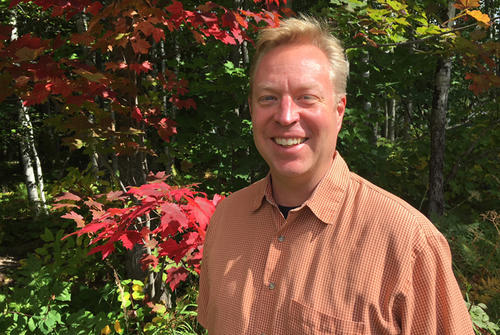
Saturday marks the official start to fall, but much of Minnesota is already seeing lush green leaves turn into bright yellows, oranges and reds.
Eric Singsaas, the director of the Wood and Bioeconomy Initiative at the Natural Resources Research Institute in Duluth, explains what’s behind Minnesota’s autumn color change.
Eric Singsaas, PhD
“The bright autumn sunshine coupled with colder temperatures is stressing the trees. Our research showed that the red pigments are formed in the leaves in the fall to shield them from excess sunlight, sort of like a sunscreen, to prevent leaf damage.
“Minnesota trees with the red/purple pigments—red maples and dogwood, for example—develop the pigments each fall. Trees that exhibit the yellow/orange pigments—paper birch, aspen—have some of those pigments throughout the year, but increase the pigments as a protective response in the fall as a kind of circuit breaker.”
Eric Singsaas, PhD, is the director of the Wood and Bioeconomy Initiative at the Natural Resources Research Institute in Duluth. His research is focused on wood use and bio-product extraction while developing capabilities in biomass processing to support Minnesota’s emerging renewable energy economy.
Contact information:
Eric Singsaas
[email protected]
(218) 788-2648
###
About University of Minnesota experts:
University of Minnesota experts can provide commentary, insights and opinions on various news topics. See selected experts on UMN’s Experts Guide or inquire about additional experts via email at [email protected].
- Categories:
- Science and Technology





